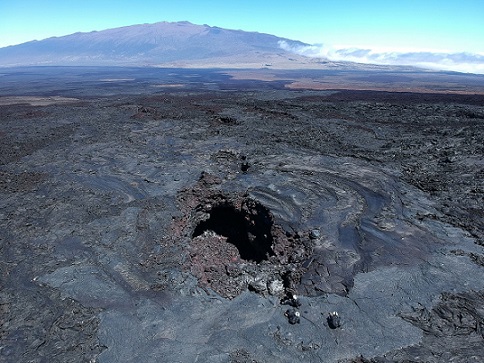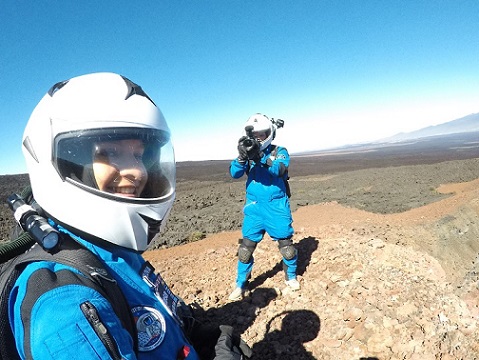International MoonBase Alliance missions at HISEAS
- 1International Moonbase Alliance, United States of America (musilova@moonbasealliance.com)
- 2Blue Planet Research, United States
- 3Institute of Robotics and Cybernetics, Faculty of Electrical Engineering and Information Technology STU in Bratislava, Slovakia
- 4Slovak Organisation for Space Activities (SOSA), Bratislava, Slovakia
- 5ESTEC, ESA, Noordwijk, Netherlands
- 6ILEWG, Noordwijk, Netherlands
Introduction
The Hawaii Space Exploration Analog and Simulation (HI-SEAS) habitat is a lunar and Martian analog research station located on the active volcano Mauna Loa in Hawaii [1]. Missions that take place at HI-SEAS are open to space agencies, organizations and companies worldwide to take part in, provided their research and technology testing will help contribute to the exploration of the Moon and Mars [Figure 1]. The International MoonBase Alliance (IMA) has been organizing regular simulated missions to the Moon and Mars at the HI-SEAS habitat since 2018. A series of EuroMoonMars IMA HI-SEAS (EMMIHS) missions have been taking place at HI-SEAS since 2019. These missions bring together researchers from the European Space Agency (ESA), IMA, the International Lunar Exploration Working Group (ILEWG), European Space Research and Technology Centre (ESTEC), VU Amsterdam and many other international organizations [2,3]. The EMMIHS missions typically last for two weeks each. During this time, the crew is isolated within the HI-SEAS habitat, which they cannot leave without performing EVAs (Extra-Vehicular Activities) in analog spacesuits and with the permission of Mission Control, also based in Hawaii [3,4,5]. A remote support team at ESTEC, the Netherlands, provides further support for the crew.

Figure 1: Analog astronauts entering a lava tube entrance close to HI-SEAS.
Research Projects
The surroundings of the HI-SEAS habitat are covered in lava and they contain very interesting geological features from a planetary science perspective, such as lava tubes. Crews and researchers have been collaborating with scientists at NASA Goddard, for instance, on performing biochemical and geophysical studies on some of the lava tubes. Research at HI-SEAS is thus focused on collecting geological and geochemical samples with implications for astrobiology, past lunar and Martian geology, and for habitability research purposes. The crews also perform architectural research inside the habitat and inside lava tubes, with implications on human psychology during long duration space missions. Furthermore, the effects of radiation on humans and the potential of growing food using local regolith is also studied at HI-SEAS.
Technology Field-Testing
From a technological point of view, the crews at HI-SEAS also test various equipment that is likely to be of great importance to humans living on the Moon and Mars. These include different types of rovers, drones and 3D printers. All of these technologies have proven to be very useful and needed by the crews. Future campaigns will be further developing tests on these devices and they will be integrating them even more into the mission operations.
Outreach & Educational Work
Missions at HI-SEAS also aim to increase the awareness about the research and technology testing that can be performed in analogue environments, in order to help humans become a multiplanetary species. Mission crews thus perform outreach and educational activities as well. Their goal is to reach out to and inspire as many young people as possible to be interested in STEM subjects. Some of these projects involve installing art projects at HI-SEAS, creating videos for school children and performing research experiments designed by students from all around the world [Figure 2].

Figure 2: IMA mission crewmembers performing outreach activities.
Future Plans
The research and technological experiments conducted at HI-SEAS are going to be used to help build a high fidelity Moon base simulator in Hawaii, and ultimately to establish an actual base on the Moon, as part of IMA’s major goals. Such technology testing will include closed-loop systems, in situ resource utilization, construction of agricultural systems and other sustainable processes at HI-SEAS. Furthermore, future missions at HI-SEAS include more EMMIHS campaigns, collaborative missions with ESA, NASA, University of Hawaii and with companies, such as SIFT and Ketone Technologies.
Acknowledgements
We would like to thank the crews EMMIHS-I through to EMMIHS IV (S. Mulder, A. Weert, M. Musilova, N. Sirikan, J. Burstein, B. Pothier, S. Kerber, A. Wanske, J. D’Angelo, A. P. Castro de Paula Nunes & C.R. Pouwels, et al.) and the HI-SEAS Mission Control support staff (Andrew Cox, Paul Ponthieux et al.). We would also like to thank the ILEWG EuroMoonMars remote support team (B. Foing, J. Ageli, J. Preusterink, A. Beniest, A. Sitnikova, M. Heemskerk, et al.).
References
[1] https://hi-seas.org
[2] Musilova M, Rogers H, Foing B, Sirikan N. et al. (2019), EMM IMA HI-SEAS campaign February 2019, EPSC-DPS2019-1152
[3] Sirikan, N., Foing, B., Musilova, M., et al. (2019). EuroMoonMars IMA HI-SEAS 2019 Campaign: An Engineering Perspective on a Moon Base, IAC, 21-25 October 2019. Washington DC, USA.
[4] Musilova, Michaela, Henk Rogers, and Bernard Foing. “Analogue research performed at the HI-SEAS research station in Hawaii.” Geophysical Research Abstracts. Vol. 21. 2019.
[5] https://moonbasealliance.com
How to cite: Musilova, M., Rogers, H., and Foing, B.: International MoonBase Alliance missions at HISEAS, Europlanet Science Congress 2020, online, 21 September–9 Oct 2020, EPSC2020-1035, https://doi.org/10.5194/epsc2020-1035, 2020

